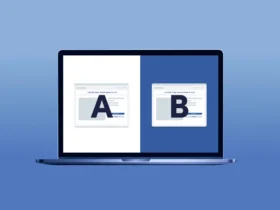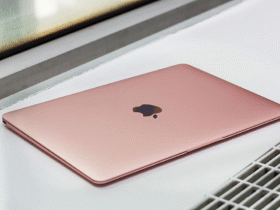Events have undergone an exceptional change in recent years due to shifting consumer expectations, technology improvements, and the demand for one-of-a-kind, unforgettable experiences. In the past, events were simple gatherings with conventional decorations and paper invitations, but nowadays, events are becoming immersive experiences meant to captivate and engage attendees.
Modern printing technology is one of the key technological advancements contributing to this transformation. These technological advancements, ranging from advanced 3D printing to fast digital printers, are changing how events are planned and implemented. Modern printers allow event planners to tailor materials to their specific needs, making the process efficient and effective. The materials will stand out and make an impression on guests that they will remember thanks to this customisation, which will improve the event’s overall experience. Additionally, event planners can access the newest technology without making a sizable upfront investment by opting for a sophisticated printer rental service, which increases the accessibility and affordability of high-quality printing solutions.
In this blog, we’ll examine how contemporary printers are transforming the events sector. We will explore how they affect cost-effectiveness, speed, creativity, customisation, and sustainability. By understanding these developments, event organisers can fully exploit contemporary printing technology to improve their events and surpass attendees’ expectations.
Evolution of Printing Technology
Printing technology has a fascinating history that dates back to the ancient era in Mesopotamia and China. These civilisations invented early printing forms using woodblock printing and movable type printing methods. These labour-intensive techniques nevertheless spurred significant breakthroughs in knowledge sharing and communication.
The printing press, a groundbreaking invention by Johannes Gutenberg, marked a turning point in the 15th century. This invention completely transformed the way that people interact with information. Suddenly, it was possible to produce books, pamphlets, and other printed materials in unprecedented quantities. The consequences were far-reaching, increasing literacy rates, promoting the exchange of ideas, and radically transforming the structure of society.
Beyond its mechanical parts, Gutenberg’s printing press evolved to represent enlightenment and empowerment. It sparked scientific revolutions, powered the Renaissance, and prepared the way for the Enlightenment by democratising access to knowledge. An enduring example of humanity’s voracious appetite for learning and its unwavering quest for advancement is the printing press.
Advancements in Printing Technology:
Digital innovation has led to a rapid evolution in printing technology. The ability to create three-dimensional objects from digital models is called additive manufacturing or 3D printing. This innovation is transforming sectors such as aerospace and healthcare, bringing creative possibilities to event props and decorations. Banners and signage in event planning are made possible by inkjet printers, which offer superior speed, resolution, and colour accuracy while producing high-quality prints on a variety of surfaces. Laser printers are ideal for professional invitations and event marketing materials because they print documents quickly and precisely, even complex graphics. These developments, constantly pushing the envelope and opening up new possibilities for event planning and execution, reflect how dynamic printing is.
Customisation and Personalisation: Importance of Personalised Materials in Event
When organising an event, personalisation and customisation are essential for improving the guest experience—from badges to invitations. Custom invitations reflect the interests of the recipients and generate a sense of exclusivity and anticipation. Tailored banners and signage direct attendees and reinforce the event’s identity while providing thematic cohesion. Personalised badges encourage networking and connections among guests in addition to identifying them. Essentially, these customised components are necessary to produce events that are impactful and memorable, where each little detail speaks to the guests directly and leaves a lasting impression.
Speed and Efficiency: The Need for Quick Turnaround Times in Event Planning
When it comes to event planning, timing is everything. Quick decisions and flexibility are required. Conventional printing techniques, such as offset printing, are laborious and slow, frequently resulting in long lead times. On the other hand, contemporary digital printers enable quick printing straight from digital files, significantly reducing production times to hours or minutes.
Event organisers find this flexibility extremely useful as it allows on-demand printing to adapt to changing needs, quickly handle last-minute changes, and promptly distribute vital information in an emergency. By utilising the speed and efficiency of contemporary printers, event planners can alleviate last-minute stress, meet deadlines, and create unforgettable experiences that exceed expectations for both clients and attendees.
How Versatility in Printing Materials Can Inspire Creative Event Designs
The versatility of modern printers with a wide range of materials feeds the creativity of event planners. Custom branding guarantees unified visuals while combining different textures and finishes, which adds depth. Eco-friendly options encourage sustainability, while interactive installations engage attendees. Connections are strengthened by on-demand personalisation. A wide range of printing materials enables event planners to create captivating, immersive experiences that push the boundaries of what’s possible. Event coordinators can push the envelope and create genuinely unique experiences that have a lasting impression on guests by utilising printing materials.
Cost Considerations in Event Planning and How Printing Fits In
In event planning, meticulous budgeting ensures a memorable experience within financial constraints. Printing materials, constituting a significant portion of expenses, demand cost-effective strategies. Modern printers offer solutions such as on-demand printing, minimising excess inventory and storage costs. Advanced technologies like digital printing optimise resource utilisation, reducing ink, toner, and paper waste. Customisation features enable printing only what’s necessary, further reducing waste.
Additionally, modern printers allow for exploring cost-effective and sustainable materials, aligning with environmental initiatives and enhancing overall event sustainability.
Comparison of Long-Term Savings with Investment in Advanced Printing Technology
Even though the initial outlay for cutting-edge printing technology might seem high, the long-term savings and advantages exceed the costs:
Lower Outsourcing Costs: By bringing printing capabilities in-house with the purchase of contemporary printers, event planners can reduce their reliance on outside printing services and related outsourcing expenses. When it comes to events that require printing frequently, in-house printing can result in significant cost savings over time.
Flexibility and Agility: Contemporary printers provide flexibility and agility in response to evolving printing needs, impromptu modifications, and customisation requests. With command over the printing procedure, event coordinators can quickly adjust to changing requirements without facing extra costs or delays.
Increased Possibilities for Branding: Event planners can reinforce their brand identity and message using in-house printing capabilities to maintain consistent branding across all event materials. By eliminating the requirement for outside printers, event planners can maximise cost-effectiveness and preserve brand integrity.
Printer Rental Service for Events: Event planners can explore printer rental services to enhance cost-effectiveness. Renting printers from IT Rentals Company for specific events eliminates the need for capital investment in printing equipment while providing access to the latest technology and expertise. This pay-as-you-go model offers flexibility and scalability, allowing event planners to tailor printing solutions to their needs and budgetary constraints.
How Printing Technology Will Continue to Evolve
Technological advancements will drive significant transformations in event printing in the future. The incorporation of augmented reality (AR) prints, which enable visitors to engage with printed materials via mobile devices, and the rise of intelligent materials—materials equipped with sensors and RFID tags for real-time data gathering and customised experiences—are among the predictions. Sustainability will also be essential, as advances in recyclable substrates and eco-friendly inks will lessen the environmental impact of printed materials.
Event planners can maintain their competitive edge by keeping up with the latest developments in the industry, investing in employee training, working with printing partners, and encouraging a culture of experimentation and creativity. By embracing these trends and technologies, event planners can create immersive, interactive, and sustainable experiences that connect with attendees and propel their events to success.
In conclusion, integrating advanced printing technologies has revolutionised the event industry, empowering planners to enhance customisation, streamline workflows, and deliver exceptional experiences. Embracing technological advancements enables event planners to stay ahead of the curve, adapt to market demands, and differentiate their events. Innovation will continue to drive progress, and by investing in training, collaboration, and experimentation, planners can harness the full potential of modern printers to create immersive and memorable events. In essence, modern printers have become invaluable assets, enabling planners to bring creative visions to life and shape the future of the event industry.














Leave a Reply